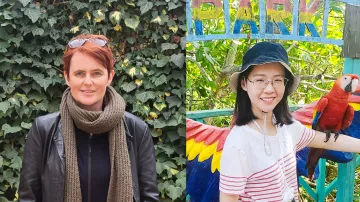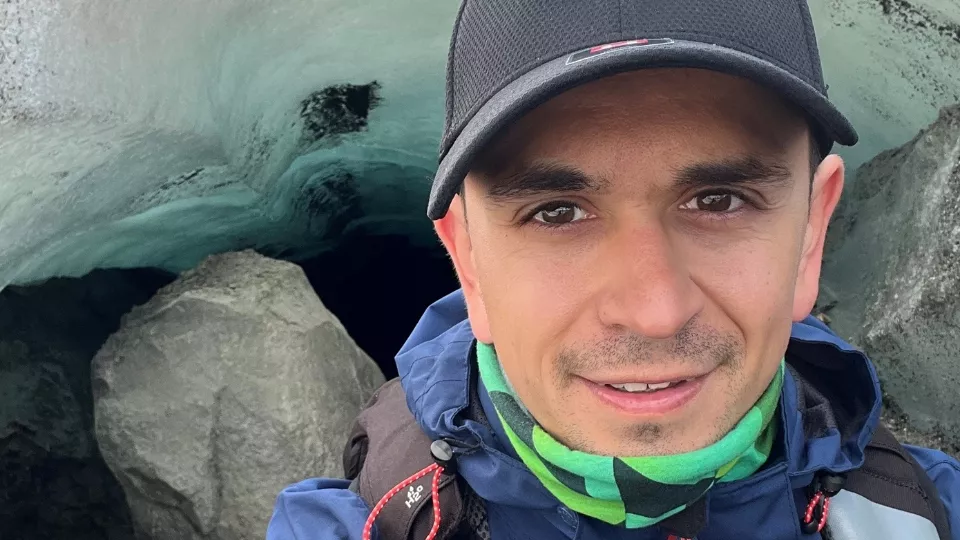
To mark International Women’s Day, we ask Céline Lacombe, research advisor with Viridien’s Geoscience innovation incubator team, and Rachel Gong, team leader with Viridien’s Subsurface Imaging group, to share their experiences, tips and lessons learned while leading two key technology projects.
What were your project’s objectives?
Celine: The project I headed up was to assess the feasibility of a new offering aimed at challenges faced during the planning phase of offshore wind farms. This was just one of many new ideas our team receives from our employees. Ideas with the greatest business potential are prioritized to be turned into new products or services. Small teams run these as projects, with more resources gradually assigned as their business prospects grow. Projects that don’t grow in business maturity are quickly redirected or halted.
Rachel: I recently led a major Gulf of Mexico seismic imaging project over a giant oil field co-owned by a group of clients, which had two objectives: first, to apply our state-of-the-art 3D elastic time-lag FWI (E-TLFWI) technology to achieve better subsurface imaging for interpretation and well planning; and second, to perform 4D or time-lapse imaging to better understand the hydrocarbon environment and fluid movement of the reservoirs.
What specific challenges did your team face during the project?
Celine: This was an innovation project, so the main challenges lay in defining a clear USP (unique selling point) from a technical standpoint, identifying client needs and estimating potential revenue. We also needed to better understand the needs of the offshore wind industry and mobilize cross-disciplinary communities within Viridien to work together on this potential new market for us.
Rachel: The 3D E-TLFWI imaging part was relatively straightforward, as we were working with the clients’ high-quality ocean bottom node data and Viridien’s advanced E-TLFWI technology. However, we knew that the 4D part of this project would be challenging, as the seismic signals we wanted to identify would be very small based on the clients’ reservoir modeling.
How did you, as project leader, help your team navigate those challenges and maintain momentum?
Celine: We began by making a big effort to better understand the offshore wind industry and the challenges its stakeholders face. We attended the WindEurope wind energy conference, but instead of listening to the technical presentations as I would usually do as researcher, I tried to speak to as many people as possible on the exhibition floor to understand their day-to-day issues. Although I was out of my comfort zone with quite limited technical knowledge in this area, I really enjoyed speaking ‘naively’ to people, and it was a great opportunity to learn more about the full life cycle of offshore wind projects, an area that is somewhat removed from Viridien’s usual business scope.
Then, to drive the project forward and prove its technical and business viability, we conducted very thorough market research, with cross-disciplinary Viridien teams working together to strengthen our product proposal.
Rachel: For the 4D imaging, given the weak signals, we redefined the initial project objectives, identifying factors we could not change, and the things we could improve and then focus on them. This meant redistributing our efforts to meet the more specific challenges. This also helped us to align understandings and expectations with our clients and better clarify the aims of our subsequent imaging steps.
Our success came down to our strong team and management support. Our team members are all brilliant and hardworking, innovative and collaborative. It’s also fully balanced in terms of the wide range of backgrounds, and our women team members all made solid and significant contributions.
I also had open conversations with peers across junior and senior management roles, which helped maintain my positive attitude. I quickly realized that my puzzles and struggles are shared, and there are practical ways to tackle them.

Can you share any notable milestones or successes achieved during the project?
Celine: One success was the offshore wind community we created inside the company, bringing in people from many different Viridien teams such as Environmental Science, Subsurface Imaging and Sensing & Monitoring. This really drove the product proposal forward, helping us to share insight into potential clients and better understand whether our existing and new products could be successfully applied in the offshore wind industry.
Rachel: Our clients told us that the final 3D E-TLFWI results were an impressive outcome, showcasing the significant improvements the latest imaging technology could bring. The area was known for its challenging geological structures, yet, with the improved image, the different client asset teams are now aligned on their interpretation of the fault imaging, which will help their well drilling plans and make a business impact.
The clients also valued our team’s dedication and significant effort. Communication and close collaboration with them were essential and beneficial on this challenging project, as they offered input and suggestions to enhance our imaging efforts. We were transparent, sharing what worked and what didn’t. This aligned expectations and ultimately achieved meaningful outcomes. It also fostered trust and strong working relationships.
Did you encounter any unexpected obstacles along the way, and how did you address them?
Celine: The main obstacle was when the team decided to halt the project because the initial product we had selected for development was not demonstrating sufficient business viability. It’s always difficult and disappointing to halt a project, but we know it’s something that may have to be done, as part of the innovation process. It’s important to stay agile, learn fast, and make choices to maximize our chances of success. Again, from an innovation point of view, it’s not the end of the road. During our work on this project, we have learned a lot about the offshore wind industry. We are now thinking collectively about other products that could impact this industry.
Rachel: Yes, many throughout the project. The major one came when the fast-track 4D imaging results still showed poorly represented signal overshadowed by noise, despite application of our latest imaging technologies. We knew it was going to be difficult, but the frustration was still very tangible, both for us and for the clients. Although they wondered whether it was worthwhile continuing to the production imaging phase, we decided to take a more research-oriented approach, did more testing to understand the underlying problem, broke the final objectives down into several smaller milestones, and discussed our new results and findings with them to get their insights. In the end, the clients were really impressed by the final 4D results, specifically the low 4D noise level we achieved, which was considered to be pushing the boundaries of what is technically possible.
What lessons did you learn from leading this project?
Celine: From a personal standpoint, working on innovation projects like this one has taught me how to manage very uncertain projects and to develop a business acumen I didn’t previously have. I have also experienced the impact of collaboration on creativity by learning how to moderate brainstorming sessions to develop and challenge potential new ideas.
Rachel: Leading this project has taught me two important lessons. Firstly, when unexpected challenges arise, which inevitably happen on every project, it’s important to pause and analyze, and get a better understanding of the problem. Secondly, it’s also important to adjust the objectives to make them measurable and achievable.
How do you see the role of women leaders evolving in our industry?
Celine: We now see more and more women leaders in our industry, which is a good thing. A diverse leadership can bring different skills, perspectives and ideas. More importantly, women leaders need to act as role models and mentor the younger generation and students.
Rachel: There is a growing presence of women professionals and leaders in the energy industry. It’s inspiring to be surrounded by positive role models and, in my daily work, I’m impressed by the exceptional achievements and leadership shown by women colleagues in our company, and among our clients and academic circles.
What advice would you give other women aspiring to lead similar projects in their respective fields?
Celine: Don’t be afraid to step out of your comfort zone. This is not easy, as mistakes will be made, but acknowledging them and learning from them can help you go forward. I would also recommend creating a support network or finding a mentor, male or female.
Rachel: It’s important to stay curious and embrace challenges. An opportunity can be daunting, but if you go for it, start by acknowledging your fear and doubts. Then take smaller steps and break it down into manageable tasks or goals. Seek a support network within your organization. I’m still working on all of this myself!


